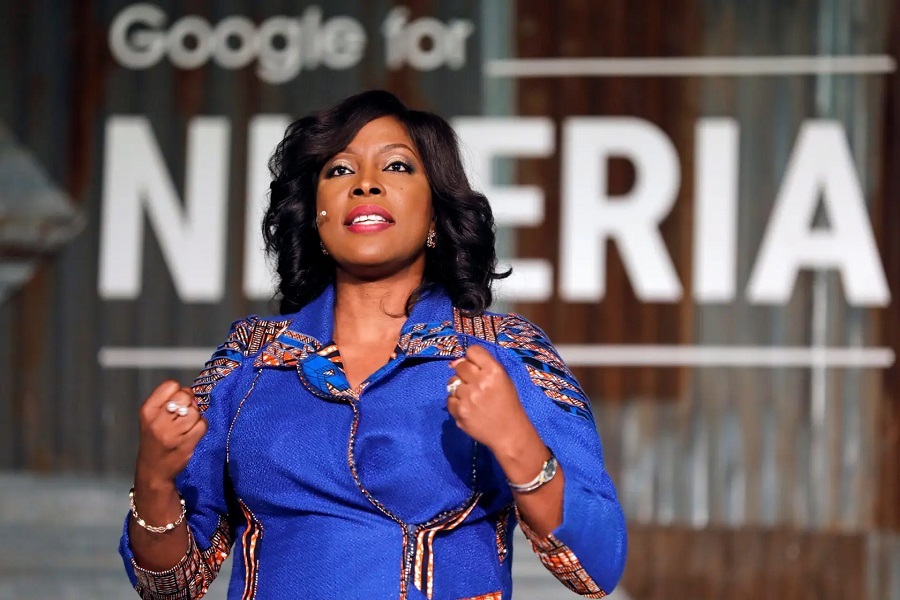Big tech companies from Silicon Valley tend to focus most business attention in the US and Europe where they make the most money. But they are increasingly setting their sights on Africa, too. Amazon is building a Prime Video team to develop original Nigerian films and series, while Microsoft has opened multimillion-dollar offices for its African engineering teams in Kenya and Nigeria.
But subsea internet cable projects by Meta, and Google might be the peak of the current pack of Africa-focused investments from Silicon Valley. In Google’s case, the cable which comes from Portugal has landed in Togo and Nigeria, and will head to St Helena, Namibia, and South Africa. It’s expected to come online before the end of this year.
Juliet Ehimuan, Google’s director for west Africa, who has been at the forefront of the process of laying the company’s ‘Equiano’ internet cable in Africa, explained to Quartz what the company hopes to get out of the project. The interview has been edited for length and clarity.
Quartz: What was different about landing Equiano in Nigeria versus in Togo?
Juliet Ehimuan: We need a landing partner in each country to land the cable. For Togo, CSquared Woezon was our landing partner. In Nigeria, it was WIOCC (West Indian Ocean Cable Company). So that’s one difference—the landing partner is unique based on each location, and each has an operating license from the respective country.
But the overall objective is the same. What we are looking at is providing additional capacity to fuel internet growth and support future demand. We are seeing that demand in the consumption of our own services, which will also ride on this infrastructure. Our research (pdf) showed that this project could improve internet speeds by six times and reduce retail prices for consumer internet data by over 20%, and that’s significant.
Quartz: How do you convince governments that this cable is good for them?
Ehimuan: The objectives are the same but of course the order of magnitude is different, just based on the size of each country’s population and therefore the opportunity. It’s important to showcase the benefit to the overall economy and how it aligns with their agenda.
In Togo, the minister for communications and digital transformation, Cina Lawson, and the president saw Equiano as an integral part of fueling their mission around digital transformation and growth. In Nigeria, we’ve had support from the communications industry regulator and relevant ministries to partner with WIOCC. Nigeria has a digital strategy and the benefits we expect from Equiano are aligned with the policy.
Quartz: Still on partnerships, the Lagos state government has been digging the ground and laying ducts for fiber optic cables around the metropolis. Did Google have direct engagements with them around how Equiano could tie into their fiber project?
Ehimuan: A few years ago, we were part of the broadband committee that created Nigeria’s broadband plan. There have been different iterations of that since, but it clearly laid out some of the challenges impacting the roll-out of infrastructure and the last mile: high cost of right-of-way, double taxation from federal and state governments, cable cuts.
The latter is what Lagos is addressing by creating ducts. Cables get damaged during events like road construction, and the cost of fixing the cables is high. Ducts create a more structured and safe way to lay cables.
Quartz: So what is in it for Google?
Ehimuan: Our business is online. Our products and services are digital. For people to access them, they need connectivity. However, our internal philosophy is to focus on the customer and everything else will follow. So we are investing ahead of financial returns. Rather than wait until sometime in the future when the market is totally ready and vibrant, let’s be part of building the market. If the internet grows, many organizations including Google will benefit.
And so our strategy in the last 10 years has been around engaging with various pillars that can help accelerate digital adoption. That includes infrastructure projects like Equiano, but also in partnering with original equipment manufacturers (OEMs) and telcos to bring down the costs of devices and data bundles. It’s everything that can ensure a virile digital community.
Quartz: Just to be clear, Google does have a financial interest in making the cable work in Nigeria?
Ehimuan: I’d certainly hope so! It means we are taking the region seriously. That it is a region that has talent, potential and opportunity. And that this is a place you can do business. It’s not a charity case where we feel sorry for the people. As a Nigerian, I prefer the first narrative. But we want to do business in a responsible way to make lives better.
Quartz: Right. Google has been in Nigeria for more than a decade now. Is Equiano the most significant of your investments here?
Ehimuan: If you try to think about what it takes to update Google Maps—do you use Google Maps?
Quartz: My life kind of runs on Google, so yes
Ehimuan: Yeah, people use Google Maps for traffic information, and it’s accurate for the most part. Now imagine what it takes to put the mapping information of just Lagos online, to get real-time traffic information, to get Street View using real photographs. That’s a huge investment, but we don’t necessarily shout it out, as long as it works. We’ve had all kinds of initiatives including training, startup grants and non-profit support.
Quartz: Where do the Google Developer Groups on college campuses fit into your strategy?
Ehimuan: If you think about the different parts needed to have a virile digital landscape, you need developers that can build great apps that solve local problems. So investing in training developers early is important; we are stimulating the appetite among young people for embracing technology and creating opportunities.
Quartz: On Equiano, what will be the business relationship between Google, WIOCC, and internet service providers in Nigeria?
Ehimuan: This cable has 20 times more capacity than previous cables, but I want to acknowledge previous projects because every investment is helpful in getting us here and where we want to go. So I acknowledge MainOne, WACS (West Africa Cable System) and so on. The intention with Equiano is to be able to partner with internet service providers to transmit the added bandwidth and make it available to users.
Quartz: And the ISPs will be paying for this, yes?
Ehimuan: Those details will be managed by WIOCC.
Quartz: Okay. What needs to be done to maximize the value from Equiano?
Ehimuan: It would be the same set of things that apply in general to ease of operations, some of which I already mentioned: double taxation, right-of-way fees—all of the factors that would make it smooth for a business to operate.
Quartz: Is there a universe in which Equiano fails to deliver on its promise?
Ehimuan: I would struggle to see that because there are committed investments to the project. The cable is on track to go live before the end of this year. A lot of work has gone into making sure we meet this timeline. I am 100% confident that it will go live. That’s one part of the equation.
The other part is that for the end user to experience the benefits, they need to get that capacity. That’s why there are conversations about partnerships. WIOCC announced a deal with Phase 3 telecom (a network transmission company) on the day we announced the cable landing in Nigeria.
Source: qz.com

